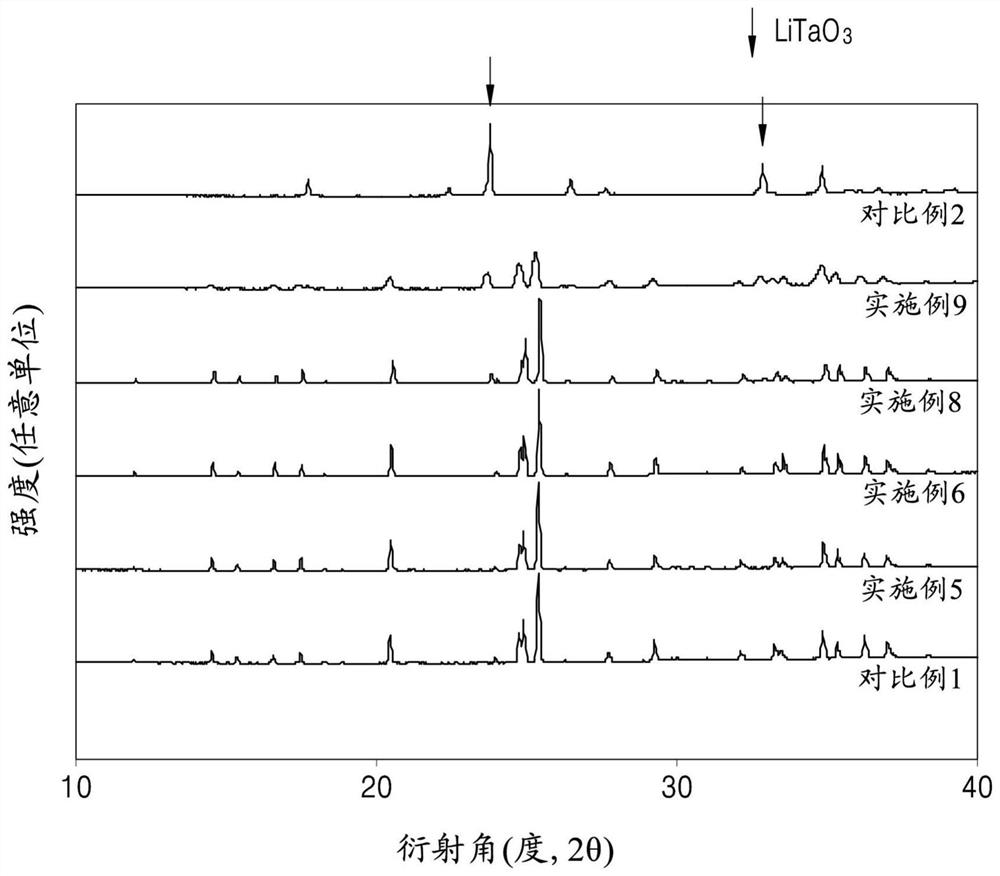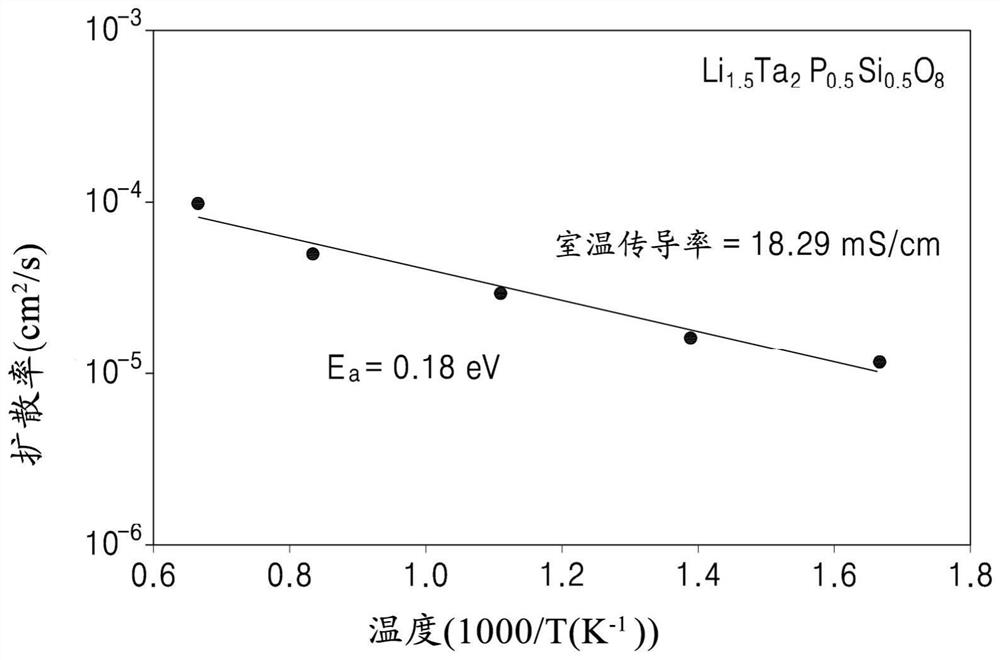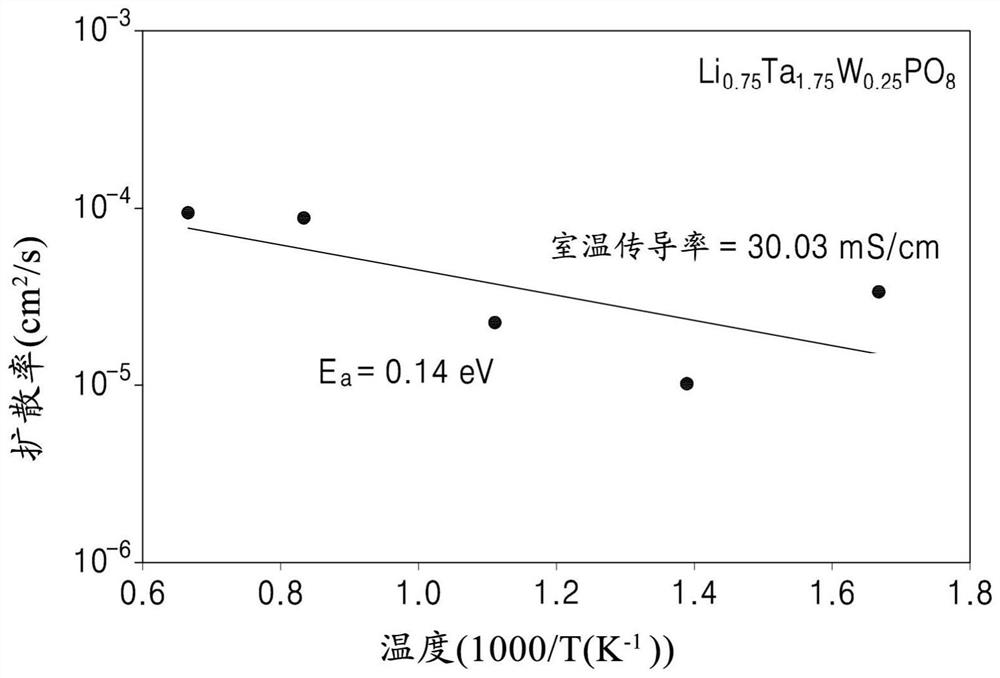Oxide, preparation method thereof, solid electrolyte including the oxide, and electrochemical device including the oxide
A technology of oxides and compounds, applied in the direction of oxide conductors, non-aqueous electrolyte batteries, electrolytes, etc.
- Summary
- Abstract
- Description
- Claims
- Application Information
AI Technical Summary
Problems solved by technology
Method used
Image
Examples
Embodiment approach
[0144] According to an embodiment, the method for preparing the oxide includes:
[0145] contacting a lithium precursor, a tantalum precursor, an M precursor, a Q precursor, a phosphorus precursor, and optionally an X precursor to obtain a precursor mixture, and heat treating the precursor mixture in an oxidizing gas atmosphere to prepare the said oxides.
[0146] The precursor mixture may include a suitable solvent. Any solvent may be used as long as it can dissolve or disperse the lithium precursor, tantalum precursor, M precursor, Q precursor, and phosphorus precursor. The solvent can be, for example, acetone, ethanol, water, ethylene glycol, isopropanol, or combinations thereof. The amount of the solvent may range from about 50 parts by weight to 1,000 parts by weight, for example, 100 to 300 parts by weight, relative to 100 parts by weight of the total weight of the precursor mixture.
[0147] The mixing can be performed using, for example, milling, blending, or sputte...
Embodiment 1
[0199] LiOH as a lithium precursor, Ta as a tantalum precursor 2 o 5 , WO as a tungsten precursor 3 , and (NH 4 ) 2 HPO 4 They were mixed in a stoichiometric ratio according to the composition as shown in Table 1, and then pulverized with a planetary mill containing zirconia balls for about 2 hours simultaneously with the acetone mixture to thereby obtain a precursor mixture. The amount of acetone was about 100 parts by weight, relative to 100 parts by weight of the total weight of the precursor mixture, and LiOH was used in an excess of about 10% by weight in the preparation of the precursor mixture to pre-compensate in the Losses during the subsequent heat treatment of the precursor mixture.
[0200] The precursor mixture was heated to about 600° C. at a temperature increase rate of about 5° C. / minute, and then subjected to a first heat treatment at the same temperature under an air atmosphere for about 8 hours.
[0201] The powder after said first heat treatment was s...
Embodiment 2-3
[0204] An oxide powder having a composition as shown in Table 1 was prepared in the same manner as in Example 1, except that lithium chloride (LiCl) was further added when preparing the precursor mixture. The amount of lithium chloride in Examples 2 and 3 was chosen stoichiometrically according to the corresponding compositions in Table 1.
PUM
| Property | Measurement | Unit |
|---|---|---|
| ionic conductivity | aaaaa | aaaaa |
| ionic conductivity | aaaaa | aaaaa |
| particle size | aaaaa | aaaaa |
Abstract
Description
Claims
Application Information
 Login to View More
Login to View More - R&D
- Intellectual Property
- Life Sciences
- Materials
- Tech Scout
- Unparalleled Data Quality
- Higher Quality Content
- 60% Fewer Hallucinations
Browse by: Latest US Patents, China's latest patents, Technical Efficacy Thesaurus, Application Domain, Technology Topic, Popular Technical Reports.
© 2025 PatSnap. All rights reserved.Legal|Privacy policy|Modern Slavery Act Transparency Statement|Sitemap|About US| Contact US: help@patsnap.com



